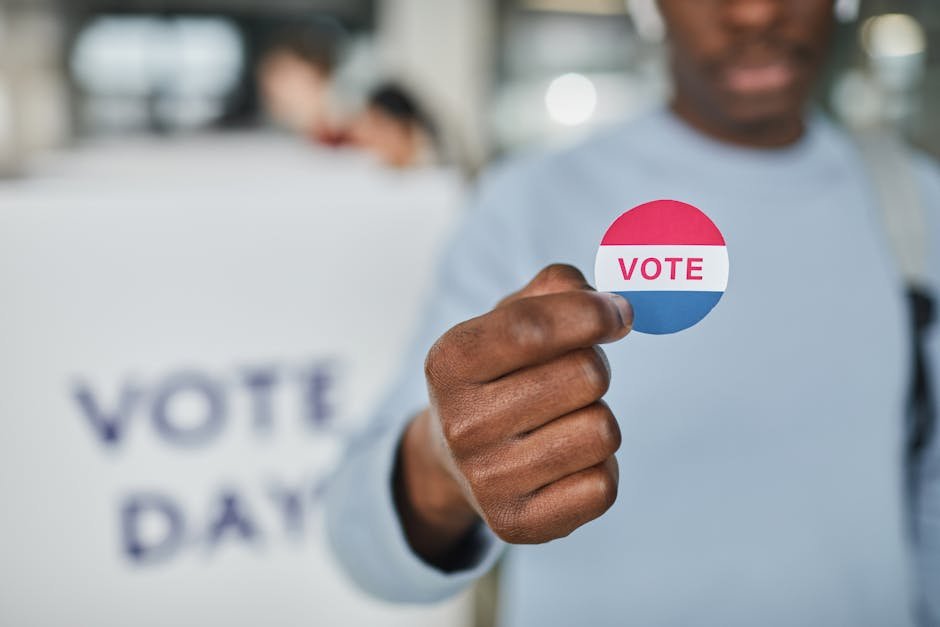 alt="Love and Health: The Social Impacts on the U.S. Government.
Close-up image of a person holding a vote sticker, symbolizing participation and civic duty." width="940" height="627" longdesc="https://loveandhealthfuture.com?longdesc=3187&referrer=3186" data-warning="Long alt text" />
alt="Love and Health: The Social Impacts on the U.S. Government.
Close-up image of a person holding a vote sticker, symbolizing participation and civic duty." width="940" height="627" longdesc="https://loveandhealthfuture.com?longdesc=3187&referrer=3186" data-warning="Long alt text" />
Love and Health: The Social Impacts on the U.S. Government
Love is a universal force, a thread that weaves through the fabric of human existence, shaping relationships, communities, and even nations. In America, a country built on ideals of liberty and pursuit of happiness, love manifests in myriad ways—romantic partnerships, familial bonds, and communal solidarity. Yet, love is not just a personal experience; it has profound social implications that ripple through the health of the population and, by extension, the functioning of the U.S. government. From marriage laws to healthcare policies, from demographic shifts to economic pressures, the way Americans love and live influences how they are governed. This blog explores how love, in its many forms, intersects with health and exerts a tangible impact on the policies and priorities of the United States government.
#### Love as a Social Institution
In America, love has long been institutionalized through marriage, a legal and cultural framework that has evolved dramatically over time. Historically, marriage was a contract rooted in economic necessity and social order, often devoid of the romantic ideals we associate with it today. By the 20th century, however, love became the cornerstone of marital unions, a shift that mirrored broader societal changes like women’s rights and individualism. The government’s role in regulating this institution—through tax benefits, inheritance laws, and immigration policies—demonstrates how deeply personal choices about love affect public policy.
Consider the legalization of same-sex marriage in 2015 with the Supreme Court’s *Obergefell v. Hodges* decision. This landmark ruling was not just a victory for love’s inclusivity; it was a response to decades of social activism and shifting public attitudes. The government had to adapt, extending federal benefits like Social Security and healthcare to same-sex couples. This change didn’t occur in a vacuum—it reflected a broader cultural acceptance of diverse expressions of love, which in turn pressured lawmakers to align policy with societal values. Love, then, is not just a private affair; it’s a catalyst for legislative evolution.
#### The Health of Love: A Public Concern
Love doesn’t exist in isolation from health. Studies consistently show that strong, supportive relationships—whether romantic, familial, or platonic—correlate with better physical and mental well-being. Married individuals, for instance, tend to live longer and report lower rates of chronic illness compared to their single counterparts. The Centers for Disease Control and Prevention (CDC) has noted that social connections reduce stress, bolster immunity, and even lower healthcare costs. In a nation where healthcare spending accounts for nearly 18% of GDP, the health benefits of love have economic implications that the U.S. government cannot ignore.
Yet, the inverse is also true: when love falters, health suffers, and the government feels the strain. Divorce rates, though declining since their peak in the 1980s, still hover around 40% for first marriages. The emotional and financial fallout from broken relationships often leads to increased reliance on public resources—mental health services, welfare programs, and housing assistance. Children of divorce, for example, are more likely to experience poverty or behavioral issues, outcomes that burden public education and social welfare systems. Love’s dissolution, then, becomes a public health issue with fiscal consequences for the government.
#### Demographic Shifts and the Politics of Love
America’s changing demographics further illustrate how love shapes governance. The rise of interracial and intercultural marriages—up from 3% of new marriages in 1967 to 19% in 2019, according to Pew Research—reflects a diversifying nation. These unions challenge traditional norms and influence policy debates, from immigration reform to anti-discrimination laws. The children of these relationships, often multiracial, are reshaping the electorate, pushing the government to address issues of equity and representation.
Meanwhile, the decline in marriage rates and the rise of singlehood signal a shift in how Americans approach love. In 2020, only 50% of U.S. adults were married, down from 72% in 1960. Young people are delaying marriage or opting out entirely, prioritizing career, education, or personal freedom. This trend has economic ramifications: single individuals are less likely to own homes, a key driver of wealth accumulation, which in turn affects tax revenues and housing policies. The government must adapt to a populace less tethered to traditional family structures, rethinking everything from tax codes to social safety nets.
Fertility rates, too, are intertwined with love and health. The U.S. birth rate has plummeted to 1.6 children per woman, well below the replacement level of 2.1. Couples are having fewer children or none at all, often citing financial pressures, climate concerns, or a desire for autonomy. This decline alarms policymakers, as a shrinking workforce threatens the sustainability of programs like Social Security and Medicare, which rely on younger generations to fund an aging population. Love—or the decision not to extend it into parenthood—thus becomes a national security issue, prompting debates over family leave, childcare subsidies, and immigration as solutions to bolster the population.
#### Love, Loneliness, and the Mental Health Crisis
If love is a balm for health, its absence is a wound. America is grappling with a loneliness epidemic, with the Surgeon General declaring it a public health crisis in 2023. Nearly one in four adults report feeling lonely, a statistic exacerbated by social media, urban isolation, and the lingering effects of the COVID-19 pandemic. Loneliness isn’t just an emotional state—it’s a health hazard, linked to higher risks of depression, heart disease, and dementia. The economic cost is staggering, with estimates suggesting it drains billions from Medicare and employer healthcare plans annually.
The government’s response has been multifaceted but strained. Mental health funding remains a fraction of overall healthcare spending, despite rising demand for services. Programs like Medicaid and the Affordable Care Act have expanded access to therapy, but shortages of providers and stigma around seeking help persist. Love’s absence, or the failure to foster community, places a burden on public systems unprepared to address a problem that begins in the private sphere. Policymakers are left scrambling to incentivize social connection—through community centers, public health campaigns, or even urban planning—demonstrating how deeply personal experiences of love (or lack thereof) dictate governmental priorities.
#### The Economics of Love and Government Intervention
Love is not cheap, and its costs reverberate through the economy and into government coffers. Weddings alone are a $50 billion industry, but the financial stakes of love extend far beyond the altar. Dual-income households, a product of modern partnerships, fuel consumer spending and tax revenue. Yet, when love falters—through divorce or domestic strife—the economic fallout is significant. Legal battles over alimony and child support clog courts, while single-parent households often lean on government assistance. The U.S. spends billions annually on programs like TANF (Temporary Assistance for Needy Families), a direct consequence of love’s unraveling.
Conversely, the government has a vested interest in promoting love’s stability. Tax incentives for married couples, enacted in the 1940s to encourage family formation, persist today, though they spark debate over fairness to singles. Policies like paid parental leave, still lagging behind other developed nations, aim to support families but face resistance from fiscal conservatives. Love, in its economic dimension, forces the government to balance individual freedom with collective stability—a tension at the heart of American governance.
#### Love and the Culture Wars
Perhaps nowhere is love’s impact on government more visible than in the culture wars. Abortion, a perennial flashpoint, is fundamentally tied to love—whether it’s the love of a parent for a potential child or the autonomy of an individual in romantic relationships. The 2022 overturning of *Roe v. Wade* shifted reproductive rights to the states, intensifying political polarization. Federal lawmakers now grapple with whether to codify abortion rights or impose national restrictions, a debate fueled by differing visions of love, family, and morality.
Similarly, transgender rights and gender identity intersect with love’s social framework. Policies around bathroom access, sports participation, and healthcare for gender-affirming care reflect how Americans define love and acceptance. These issues dominate legislative agendas, judicial battles, and election cycles, illustrating how intimate choices shape the public square. The government, tasked with mediating these conflicts, becomes a mirror of society’s evolving understanding of love.
#### Love as a Political Force
Love is also a mobilizing force in politics. Movements for civil rights, women’s liberation, and LGBTQ+ equality were born from love—for self, for others, for justice. These campaigns pressured the government to dismantle discriminatory laws and expand protections, from the Voting Rights Act to the Equality Act (still pending in Congress). Today, love fuels activism around climate change, as younger generations demand a livable planet for their future families. The U.S. government, responsive to electoral pressure, must navigate these demands, balancing short-term politics with long-term survival.
Elections themselves are shaped by love’s social currents. Married voters tend to lean conservative, while single women—a growing demographic—favor progressive candidates, according to exit polls. The “marriage gap” in voting behavior underscores how personal choices about love influence national policy. As America’s romantic landscape shifts, so too does its political destiny.
#### Conclusion: Love’s Lasting Echoes
Love in America is more than a sentiment—it’s a social determinant with profound implications for health and governance. It shapes who we marry, how we live, and what we demand from our leaders. The U.S. government, whether through healthcare reform, economic policy, or cultural legislation, is perpetually responding to the ways Americans love and the health outcomes that follow. As the nation evolves—more diverse, less tethered to tradition, yet yearning for connection—the interplay of love and health will continue to challenge and redefine the role of government. In a country where the pursuit of happiness is a founding promise, love remains both a personal quest and a public project, its echoes felt from the bedroom to the ballot box.
American Health, Love & Care: Navigating Love and Health Issues in Today’s America.


 alt="Love and Health: The Social Impacts on the U.S. Government.
Close-up image of a person holding a vote sticker, symbolizing participation and civic duty." width="940" height="627" longdesc="https://loveandhealthfuture.com?longdesc=3187&referrer=3186" data-warning="Long alt text" />
alt="Love and Health: The Social Impacts on the U.S. Government.
Close-up image of a person holding a vote sticker, symbolizing participation and civic duty." width="940" height="627" longdesc="https://loveandhealthfuture.com?longdesc=3187&referrer=3186" data-warning="Long alt text" />

欢迎光临,这是一个面向18岁以上人群的内容平台。
进入前请确认您已年满18岁,并同意了解本站内容性质。
本网站包含不适合未成年人观看的内容,请理性访问。 色情网站。
若您未满18岁,请立即停止访问。
我们致力于提供健康安全的网络体验。